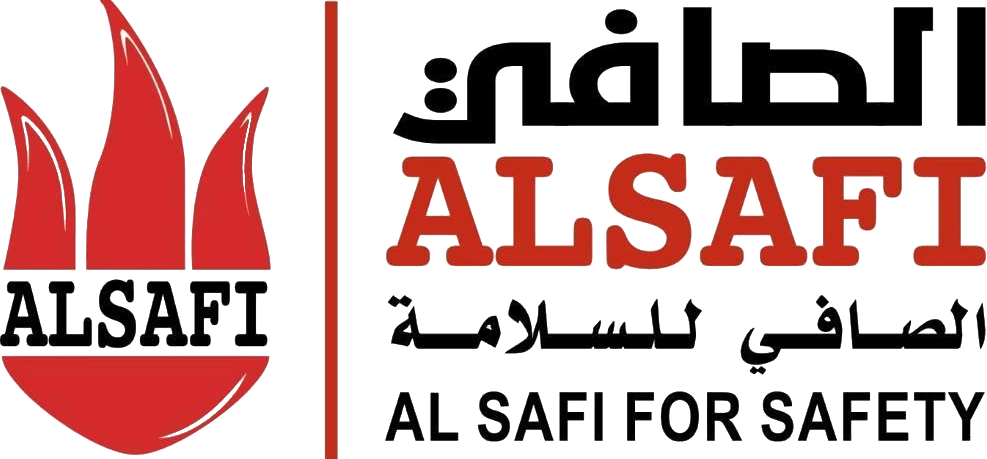المدونة
ما هي أنظمة اطفاء الحريق في المباني؟

تُعتبر أنظمة إطفاء الحريق في المباني من الأمور الأساسية التي ينبغي وضعها بالحسبان عند تجهيز أو بناء أي منشأة جديدة، خصوصًا إذا كانت منشأة خدمية مثل الشركات والمصانع؛ إذ أنها تكون أكثر عرضةً لحدوث الحرائق؛ لأن هذه الأنظمة تلعب دور حيوي بحماية كل من الأرواح والممتلكات من مخاطر الحرائق المُفاجئة، وهي تعتمد على تقنيات متطورة للكشف عن مكان الحريق وإخماده بسرعة.
وفي هذا المقال سنُوضح لك ما هي أنواع أنظمة إطفاء الحريق في المباني؛ إذ تتنوع هذه الأنظمة لاختيار النظام المناسب منها حسب طبيعة المبنى الذي سيتم تركيبها به، وحسب نوع المخاطر المُحتمل حدوثها به .
ما هي أنظمة إطفاء الحريق في المباني؟
الهدف الرئيسي من أنظمة مكافحة الحريق في المباني هو الحد من الخطر الكبير الناتج عن مختلف الحرائق، وحماية أرواح الأشخاص الموجودين داخل المنشأة كذلك، بالإضافة إلى تقليل الخسائر التي يمكن أن يُصاب بها المبنى بسبب الحريق.
وهو ما يجعل هذه الأنظمة مهمًا ولا يمكن الاستغناء عنها إطلاقًا بالمنشآت المختلفة وبالتحديد المنشآت الخدمية؛ إذ أنها تكون أكثر عرضةً للحرائق عن غيرها من المنشآت الأخرى.
يمكنك الاتصال بنا على شركة الصافي للحصول على أفضل النصائح التي تساعدك في توفير نظام الاطفاء المناسب لجميع انواع الحرائق .
ما هي أنواع أنظمة مكافحة الحريق في المباني؟
دائمًا ما تسعى الشركات المتخصصة في تنفيذ مشروعات الحريق لتوفير أعلى قدر من الأمان بكافة المنشآت باختلاف أنشطتها؛ لذا فإن أنواع أنظمة إطفاء الحريق في المباني تختلف حسب المادة المُخصصة للإطفاء، ومن ضمن هذه الأنواع ما يلي:
نظام مكافحة الحريق بالمياه:
تختلف اجهزة اطفاء الحريق بالمياه عن نظام الحريق بالمباني؛ إذ أن هذا النوع الذي يُعد من أفضل أنواع المعدات المُخصصة لإطفاء الحريق يعتمد على رذاذ الماء، مع الاعتماد أيضًا على قوة الضغط من أجل إخماد الحرائق.
نظام مكافحة الحريق بثاني أكسيد الكربون Co2:
يعتمد تصميم نظام مكافحة الحريق بثاني أكسيد الكربون على غاز ثاني أكسيد الكربون؛ إذ يُساعد هذا الغاز في إطفاء الحرائق، ويتم ملء تلك الاسطوانات بالغاز على هيئة سائل، لكنه يتحول لغاز حين يندلع الحريق، ويُستخدم هذا النوع عادةً بالحرائق الناجمة عن الماس الكهربائي.
ويتكون تصميم نظام مكافحة الحريق بثاني أكسيد الكربون Co2 مما يلي:
- شبكة الأسلاك والجرس الخاص بإنذار الحريق والمواسير الخاصة به.
- الأسطوانات المحتوية على غاز ثاني أكسيد الكربون.
- شبكة المواسير المسئولة عن تفريغ الغاز إذا ما حدث حريق.
نظام مكافحة الحريق باستخدام غاز FM200:
يتم تصميم هذا النظام بالأماكن التي ترتفع بها نسب الحرائق الكهربائية، وهو يُعد مناسبًا كذلك لإطفاء حرائق المواد الصلبة؛ لذا فإنه يُفضل تركيبه بالمستشفيات، المتاحف، البنوك، وغرف المراقبة والتحكم.
أنظمة مكافحة الحريق بالرغوة:
تعتمد أنظمة مكافحة الحريق بالرغوة على مجموعة من الفقاعات التي تكون مملوءة بالهواء، والتي تتكون من محلول مائي، ومن أهم مزاياها أن كثافتها أقل من كثافة السوائل؛ وهو ما يجعلها قادرة على فصل وتبريد الهواء وإيقاف اندلاع الحريق.
مكونات نظام مكافحة الحريق في المباني
تتشابه أغلب أنواع أنظمة إطفاء الحريق بالمكونات الخاصة بها، ولكنها تختلف باختلاف المادة التي تستخدم بعملية الإطفاء، ومن مكونات أنظمة مكافحة الحريق في المباني ما يلي:
- أولى مكونات هذه الأنظمة هو نظام الإنذار الصوتي، وهو نظام يُنبه الأفراد بأن هناك حريق داخل المبنى، وأنه يجب إخلاؤه فورًا.
- المُعدات المستخدمة بإطفاء الحريق باستخدام المرشات التلقائية.
- من ضمن المكونات أيضًا شبكات الصرف ومواسير التغذية.
اقرأ عن : مخطط سلامة معتمد
ما هي أفضل شركة توريد وتركيب أنظمة مكافحة الحريق في السعودية؟
تُعد شركة الصافي من أفضل الشركات المتخصصة في توريد أنظمة مكافحة الحريق وتركيبها؛ وذلك لهذه الأسباب:
- تُوفر الشركة كافة أنواع أنظمة الإنذار والإطفاء.
- تفي بوعودها مع العملاء، وتُسلمهم المشاريع المتُفق عليها بينهم بالمواعيد المُحددة للتسليم.
- تقوم بتوريد أفضل أنظمة مكافحة الحريق في المباني بأعلى جودة.
- تُوفر أسعارًا تنافسية مقارنةً بالخدمة المُقدمة مقابلها.
- تُعد من أفضل الشركات بمجال صيانة أنظمة مكافحة الحريق.
- تُوفر قطع الغيار الأصلية اللازمة لأنظمة مكافحة الحريق سواء بالمستشفيات أو المصانع أو غير ذلك.
- تُقدم استشارات فنية للعملاء بخصوص أنظمة مكافحة الحريق.
- لديها سابقة أعمال مميزة وناجحة بمجال توريد وتركيب أنظمة مكافحة الحريق.
فإذا كنت تبحث عن أفضل شركة لتركيب أنظمة مكافحة الحريق في المباني؛ فإن شركة الصافي ستكون هي خيارك الأمثل؛ فلا تتردد الآن في التواصل معها والاستفادة من خدماتها.
وهكذا عزيزي نكون قد وصلنا إلى نهاية مقالنا الذي وضحنا لك خلاله ما هي أنظمة إطفاء الحريق في المباني وأنواعها، وقد اتضح لك مدى أهمية هذه وجود هذه الأنظمة بأي مبنى أو منشأة؛ فهي تحمي أرواح الأفراد الموجودين بها عند حدوث حريق، وتقلل الخسائر التي قد تحدث بسبب اندلاع الحريق كذلك، مما يجعلها وجودها أمر ضروري عند تجهيز أو بناء أي مبنى أو منشأة، ويصعب الاستغناء عنها.
أسئلة شائعة قد تدور في ذهنك حول أنظمة إطفاء الحريق في المباني
ما هو الفرق بين نظام إطفاء الحريق FM200 ونظام إطفاء الحريق غاز CO2؟
الفرق الرئيسي ما بين نظام إطفاء الحريق FM200 و نظام إطفاء الحريق غاز ثاني أكسيد الكربون يتمثل في أن غاز FM200 غير ضار بالكائنات الحية، كما لا يؤثر على الأجهزة؛ وهو ما يجعله خيارًا مناسبًا للشركات التي لديها أجهزة ومعلومات حساسة قد يتسبب فقدانها في مشاكل تؤدي لخسارة هذه الشركات.
هل أنظمة إطفاء الحريق إلزامية في جميع المباني؟
نعم؛ إذ تفرض أغلب اللوائح والقوانين المحلية تركيب أنظمة إطفاء الحريق بالمباني السكنية والصناعية والتجارية، حسب متطلبات كل مبنى منهم ومتطلبات السلامة داخله.
هل يجب صيانة أنظمة إطفاء الحريق بشكل دوري؟
نعم، يُنصح بإجراء فحوصات وصيانة دورية لأنظمة مكافحة الحريق؛ لضمان كفاءة عملها، ويتم هذا عن طريق فنيين متخصصين ووفقًا للمعايير المعتمدة.
هل يمكن تركيب أكثر من نوع من أنظمة الإطفاء في نفس المبنى؟
نعم يمكن؛ فقد يكون ضروريًا ببعض الحالات الجمع ما بين عدة أنظمة إطفاء لحماية أماكن مختلفة من المبنى، كاستخدام رشاشات الماء بالمكاتب، وأنظمة غازية بغرف الخوادم الإلكترونية.
هل يمكن لأنظمة إطفاء الحريق أن تتسبب في أضرار للممتلكات؟
قد تتسبب بعض الأنظمة كأنظمة الماء والرغوة في أضرار للأثاث والمُعدات، لكن هناك أنظمة مثل نظام غاز ثاني أكسيد الكربون والغاز الجاف يتم استخدامها لحماية الأجهزة الحساسية دون ترك بقايا تمامًا.



